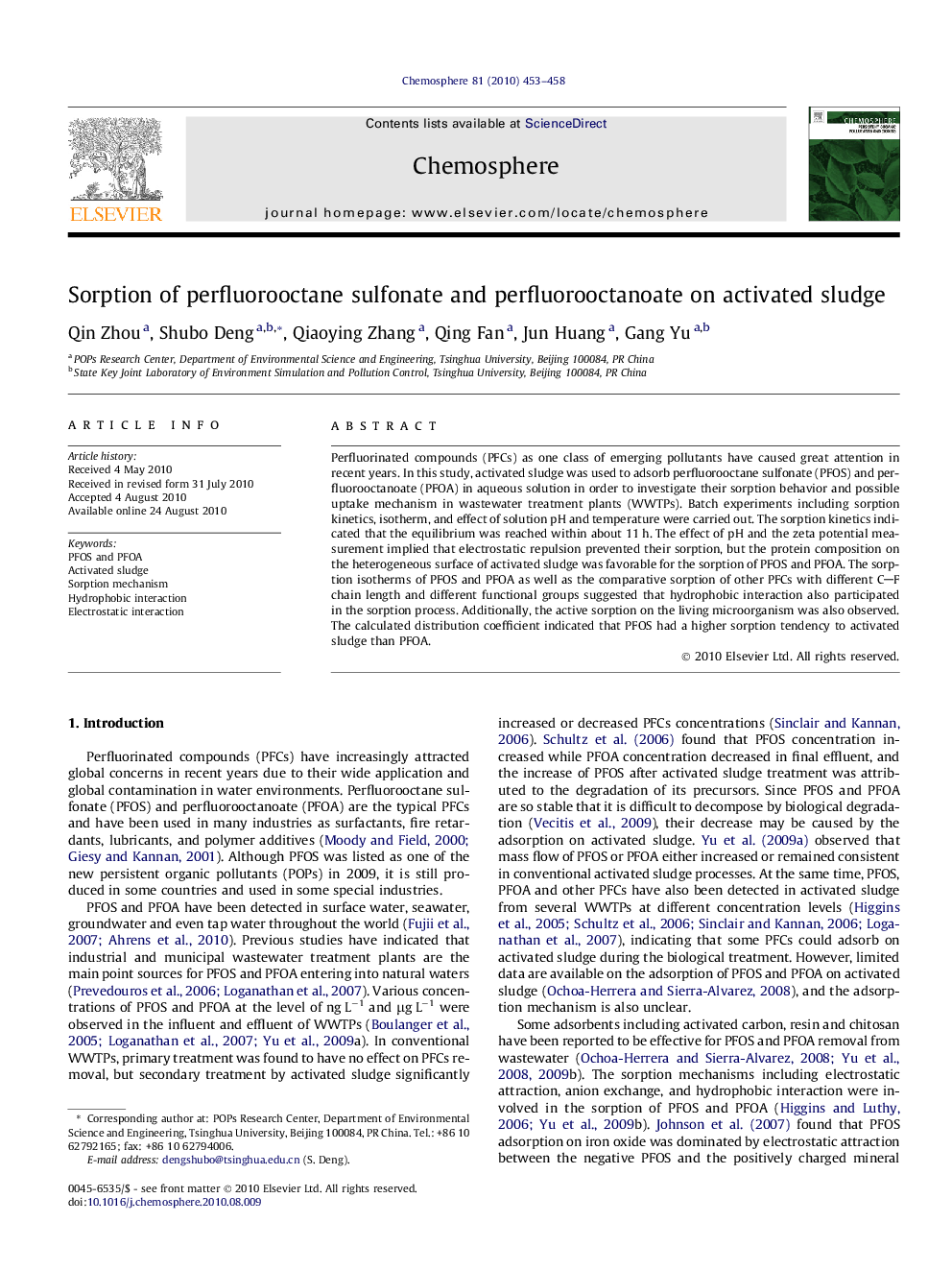| Article ID | Journal | Published Year | Pages | File Type |
|---|---|---|---|---|
| 4411247 | Chemosphere | 2010 | 6 Pages |
Perfluorinated compounds (PFCs) as one class of emerging pollutants have caused great attention in recent years. In this study, activated sludge was used to adsorb perfluorooctane sulfonate (PFOS) and perfluorooctanoate (PFOA) in aqueous solution in order to investigate their sorption behavior and possible uptake mechanism in wastewater treatment plants (WWTPs). Batch experiments including sorption kinetics, isotherm, and effect of solution pH and temperature were carried out. The sorption kinetics indicated that the equilibrium was reached within about 11 h. The effect of pH and the zeta potential measurement implied that electrostatic repulsion prevented their sorption, but the protein composition on the heterogeneous surface of activated sludge was favorable for the sorption of PFOS and PFOA. The sorption isotherms of PFOS and PFOA as well as the comparative sorption of other PFCs with different CF chain length and different functional groups suggested that hydrophobic interaction also participated in the sorption process. Additionally, the active sorption on the living microorganism was also observed. The calculated distribution coefficient indicated that PFOS had a higher sorption tendency to activated sludge than PFOA.
